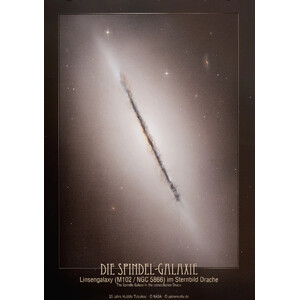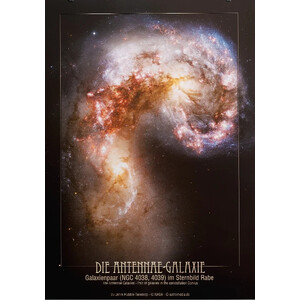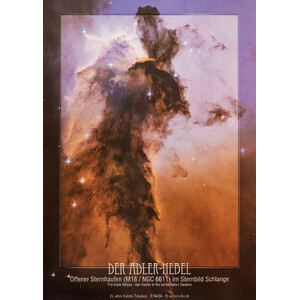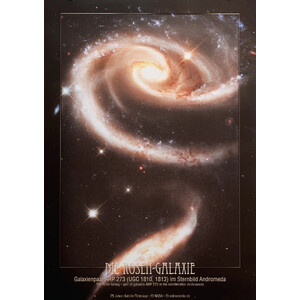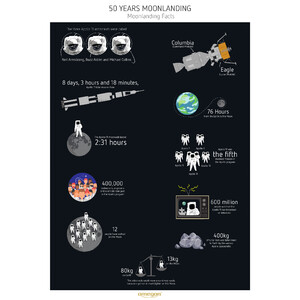Stampa decorativa di un'immagine ripresa dal telescopio Hubble. © NASA
Messier 106 o NGC 4258 è una galassia a spirale con dimensioni di 18',6 × 7',2 e luminosità apparente di 8,3 mag nella costellazione Canes Venatici.
M106 è una galassia classificata nella sequenza di Hubble come di tipo Sbp, dove la p sta per peculiare, ovvero particolare. Alcuni autori indicano anche il tipo SABbc, ovvero tra spirale normale e spirale a barra.
Con una distanza di circa 24 milioni di anni luce, la galassia si trova nelle vicinanze di diversi gruppi di galassie, di cui è membro a seconda dell'autore, ad esempio il gruppo dell'Orsa Maggiore, il gruppo Coma-Sculptor, il gruppo Canes Venatici I o il gruppo Canes Venatici II.
La galassia ha un diametro di circa 135.000 anni luce. Il nucleo della galassia è attivo e noto come sorgente radio sin dagli anni '50. Nel 1995 Brent Tully et al. descrissero che il centro emette un getto che dovrebbe essere collegato al massiccio oggetto centrale di questa galassia scoperto nello stesso anno. Questo oggetto centrale è probabilmente un buco nero di quasi 40 milioni di masse solari.
Nei suoi dintorni, gli astrofisici osservano uno spettro di linee di emissione che conferisce al nucleo della galassia la classificazione di tipo LINER (Low Ionisation Nuclear Emission-line Region).
I due bracci a spirale sono caratterizzati da grandi quantità di stelle giovani e massicce che brillano di una luce bluastra. La galassia sta attualmente attraversando una fase di "starburst", in cui il tasso di formazione stellare è notevolmente aumentato.
M106 fu scoperta nel luglio 1781 da Pierre Méchain.

